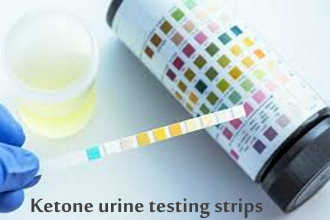
Are you following a keto diet? Everyone is conscious about their health. They care about what they eat and how much calories are there in their food has.
People try to take different steps to keep them active, fit, and healthy. Keto diet is one popular diet for this practice.
In a keto diet, you are supposed to have moderate protein with low carbs and high fat. For some of you, high fats may seem like a shocking addition. But you will understand once you go through with how the diet works.
The diet plan is prepared in a way to burn out fat fasts from your body.
Hence, you will lose weight with this diet.
It is not only good for losing weight but also has other benefits, like raising HDL levels in the blood. HDL is the good cholesterol that keeps you in shape.
However, there is one question that lurks in many people’s minds. How long does it take to shift to ketosis? In this article, we will share information that will answer this question as clearly as possible.
How long does it take to shift ketosis?
What happens in the keto diet?
You see, many people are happy with ketosis. Although there are some with no results from the keto diet. Why is that so?
For a keto diet to work properly, your body needs to enter the ketosis state. In this state, your body fats are converted into sources of energy called a ketone.
It only happens when there is insufficient glucose in the blood. You know, the keto diet limits the intake of carbohydrates.
Hence, there is little glucose in the blood. It creates a condition where glucose is not available when energy is needed.
At this point, the body will start breaking down fats to burn and release energy. As a result, you lose fats from your body.
What happens in glucose is present in blood?
In general, when there isn’t any restriction, the carbohydrate in the diet is changed into glucose. So, glucose is present in your bloodstream.

The glucose is turned to glycogen and stored in the body. When there is not enough storage for glycogen. The excess glycogen is changed into fat.
Now when energy is needed, only the glucose breaks down to release energy. Therefore, the fats stored in your body remain as it is.
So you can only gain weight with time. There is no break down of fat i. in the natural process.
However, there is a reverse process to this as well. But for that to work, you need to get rid of the glucose in your blood.
The only way to do this is by cutting carbohydrates, which breaks down into glucose after you eat it. In the absence of glucose, the body will convert the glycogen back to glucose.
Hence, glycogen and fats are broken down to release energy when necessary.
How much carbohydrate should be in my diet?

After reading all the information, you must have realized how the keto diet works. If you want to reduce weight in this process, you have to control carbohydrate intake.
Every day your carb consumption should not exceed more than 50 grams. Only then, your body will switch to the process of burning ketone molecules for energy.
How long does it take to enter ketosis?
Ketosis is the stage where fats are converted to ketones and burned to release energy. For a body that is used to getting a supply of carbs, it may take some time to reach ketosis.
Since everyone has different metabolic activities, it depends on each individual. If your daily keto intake is somewhere between 20g to 50g, then it may take a few days to enter ketosis.
But depending on metabolism, it can take as long as a week or more.
Why does it take longer for some people to enter ketosis?
As we said, if you want to follow the keto diet, you have to give up on carbohydrates. The entire process depends on how much carbohydrates you take.
In some cases, people do end up taking carbohydrates unintentionally. Most of the food we eat is a combination of different types of nutrients. Some are rich in protein with limited fats and carbs.
So, you might end up taking more carbohydrates than you think. Overall, it affects the time taken to enter ketosis.
Another factor that affects this period is your body’s makeup and metabolism. Some people can take 90-gram carbs and enter ketosis easily, while others struggle to enter with 30-gram carbs.
It happens due to the different genetic makeup of people. You can reach ketosis easily while others have a hard time coping up.
For these people to gain ketosis, they need to lower their carb intake further to 20 grams or so to make it work.
Factors that affect reaching ketosis
It depends on your carbohydrate intake each day. Is it 20 grams or 40 grams? How much fats and protein are there in your diet also affects the speed of reaching ketosis.
Additionally, how much exercise you do, what type of exercise are you doing, changes the time for ketosis. Apart from that, your age, metabolism is also an important factor.
If you had a high-carb diet before starting the keto diet, then it will take longer for you. Do you know why? It is because much food is stored in your body as glycogen.
At first, glycogen must be used up by the body. Once stored glycogen is over, it will start breaking down fats from the body. At this point, the body enters ketosis.
Common mistakes while following the keto diet
You may want to skip eating fats in a keto diet. Everyone knows fats make us obese, and that is the source of some severe diseases.
But this is a common mistake made by keto diet followers. The entire keto plan is based on metabolism and burning fats from your body.
A keto diet is divided into proportions. You should have 70 percent fat, 20 percent protein, and 10 percent carbohydrate.
The excess fat also makes up for the cut off carbohydrates from the diet. Fats are also there to make sure you don’t eat excess protein. If you take too much protein, it may also stop you from entering ketosis as well.
You see, when you eat too much protein, another process takes place in the body. It is called gluconeogenesis.
In this process, the extra amino acids you get from protein is converted to glucose. It can hamper the entire plan of the keto diet and prevent you from entering ketosis.
On the other hand, if you are exercising along with the keto diet, you are likely to enter ketosis faster. So, if you are serious about the keto diet, then these are some factors you should keep in mind.
How can you find out if you are in ketosis?
Entering ketosis is not a normal process. Your body is changing its main energy source, which may make changes in your body.
You need to track these signs, to understand if you are entering ketosis or not. Calculate your ketone levels to find out how well your diet plan is working.
How to measure the ketone level?
There are three methods to measure ketone levels. Each is determined with a different chemical. They are; beta-hydroxybutyrate, acetone, acetoacetate.
You need to check the presence of these chemicals in your body to understand the condition. It can be done by testing blood, urine, or exhaled breath.
Ketone urine testing strips
These are some of the cheapest and simplest ways to find out the ketone level. You will need to perform a urine test with the strips.

The strip changes color due to the presence of acetoacetate. It changes color shades from pink to purple. The darker the color, the higher the ketone level you have.
Using a breath meter

Another method to find out your ketone level is through the breath. This is a device called the Ketonix. You can use it to find out the acetone level in your body.
When you breathe into the system, it flashes a light. You can use the color to find out your ketone levels. This is known as a very accurate method among the three.
Testing blood for ketone level
A blood ketone meter is available for measuring ketone levels. The device is similar to a glucometer. It can measure the beta-hydroxybutyrate level from the blood.
When you are using this ketone meter, prick your finger with a pin. Draw a drop of blood on the strip of the machine. Now, wait for the reading.
If the result is above 0.5 mmol, then your body is entering ketosis. On the other hand, if the reading is between 1.5-3 mmol, then you are at a decent ketone level. Always try to keep your ketone levels in between these values.
Considering how the blood ketone meter works. It is more helpful to guide you in understanding your ketone levels.
What can you do to enter ketosis faster?
Excercise

If you read through everything, you know that exercise can help you reach ketosis. Although, you have to do it on a regular schedule.
Pick a particular exercise that you enjoy a lot and go for it. Vigorous contractions of muscles burn up glucose faster. Hence it becomes easier for you to enter ketosis.
Monitor your carb intake
As you know, carb intake can affect how long it takes to enter ketosis. So, you need to keep watch of the carbs in your diet.
Keep it as low as possible, if it is taking a long time to show the effects of the keto diet.
The limit to carbohydrates on the diet is 20 to 50 grams per day. If you want, you can change this to 20 grams a day. It should speed up the process of getting into ketosis.
Another point you need to watch out for is the carbs that come with fatty and protein-rich foods. You have to make sure that there is no hidden carb in the diet.
Most of the time dressings and sauces bring the extra carb in the diet. Many people tend to forget about this completely while eating.
Keep healthy fats in the diet
You need to have 70 percent of fats in your diet. Like we said, fats act as a replacement for carbohydrates. But you can’t have any type of fats. You need to find healthy sources like;
coconut oil
olive oil
nuts
fish oil
avocado oil etc
In addition to the list, you need to try short term fat, like eggs. Along with that, take medium-chain triglyceride supplements. These are easy to break down and shift your body to burning fats instead of glucose.
Regularly check ketone level
It probably goes without saying, but if you are struggling to enter ketosis, you need to check your ketone level often. Take each step above and see how much your ketone level changes every day.
That way, you can make sure the steps are done right.
Intermittent fasting
If the above techniques do not raise your ketone level enough, then you can try this fasting. Intermittent fasting is fasting based on strict timing.
To follow this, you will need a schedule for each meal along with a fasting time. It should be able to shift your main source of energy from carbohydrates to ketones.
Final words
A Keto diet has gained a good reputation around the world. If you are willing to go for a keto diet, you have to be determined. Generally, entering ketosis is not difficult.
But some people do get stuck in the process. As you can see, there are lots of facts you need to think through.
For example, exercise or go for intermittent fasting? But above all, you need to be patient. Especially if it is taking longer to enter ketosis.
To put it simply, you have two plans in your hand. The first one is the keto diet, and the second one only comes to play if it is taking longer to change your body fuel.
If you understand the entire process and follow them with patients. It should be easier for you to will reach ketosis.
In case you are not losing weight there are common mistakes dieters do .. Read about these common mistakes for not losing weight in ketosis diet


0 Comments:
Post a Comment